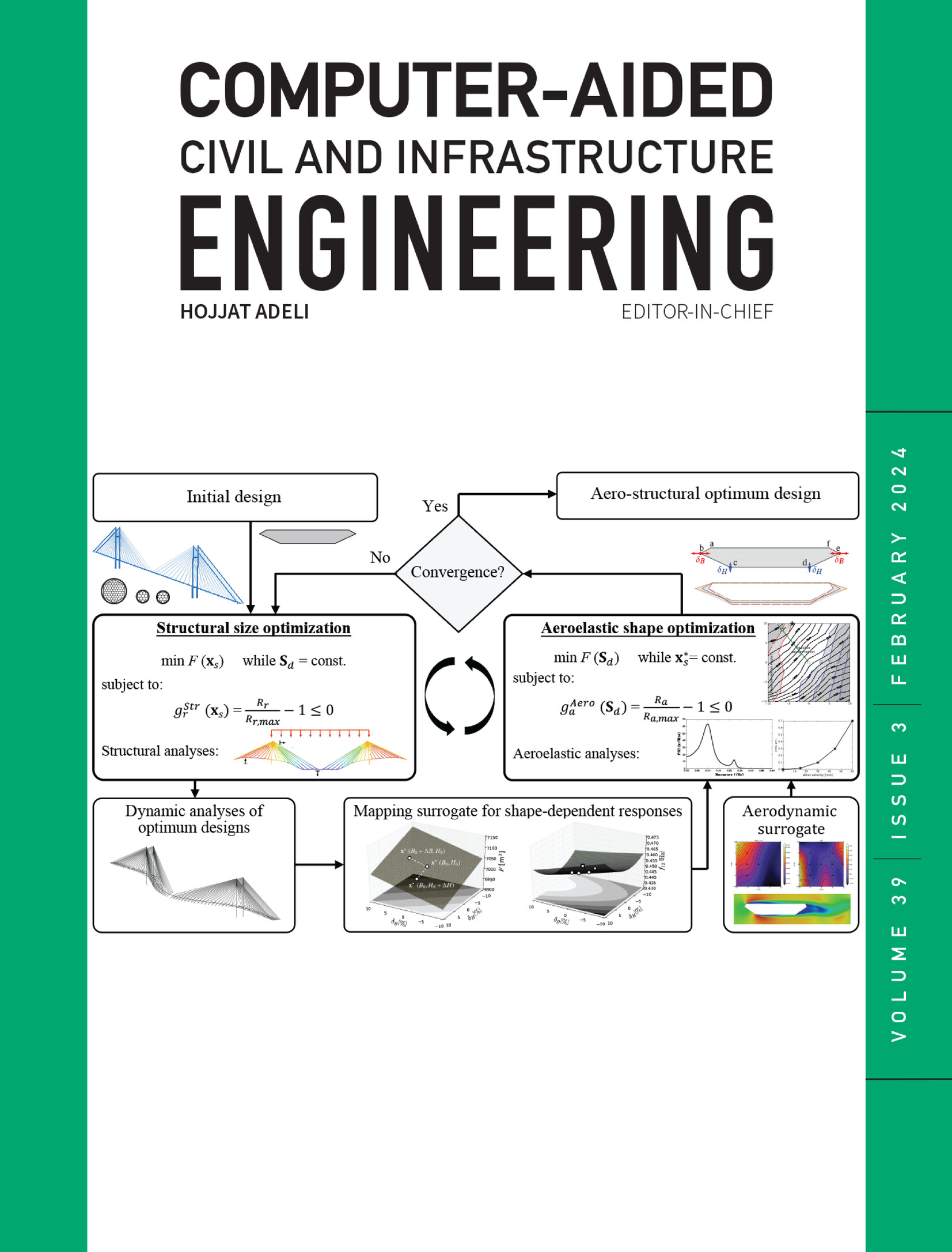Modeling of spatially embedded networks via regional spatial graph convolutional networks
IF 8.5
1区 工程技术
Q1 COMPUTER SCIENCE, INTERDISCIPLINARY APPLICATIONS
引用次数: 0
Abstract
Efficient representation of complex infrastructure systems is crucial for system-level management tasks, such as edge prediction, component classification, and decision-making. However, the complex interactions between the infrastructure systems and their spatial environments increased the complexity of network representation learning. This study introduces a novel geometric-based multimodal deep learning model for spatially embedded network representation learning, namely the regional spatial graph convolutional network (RSGCN). The developed RSGCN model simultaneously learns from the node's multimodal spatial features. To evaluate the network representation performance, the introduced RSGCN model is used to embed different infrastructure networks into latent spaces and then reconstruct the networks. A synthetic network dataset, a California Highway Network, and a New Jersey Power Network were used as testbeds. The performance of the developed model is compared with two other state-of-the-art geometric deep learning models, GraphSAGE and Spatial Graph Convolutional Network. The results demonstrate the importance of considering regional information and the effectiveness of using novel graph convolutional neural networks for a more accurate representation of complex infrastructure systems.通过区域空间图卷积网络建立空间嵌入式网络模型
高效地表示复杂的基础设施系统对于边缘预测、组件分类和决策等系统级管理任务至关重要。然而,基础设施系统与其空间环境之间复杂的相互作用增加了网络表示学习的复杂性。本研究为空间嵌入式网络表示学习引入了一种新颖的基于几何的多模态深度学习模型,即区域空间图卷积网络(RSGCN)。所开发的 RSGCN 模型可同时学习节点的多模态空间特征。为了评估网络表示性能,引入的 RSGCN 模型被用于将不同的基础设施网络嵌入潜在空间,然后重建网络。合成网络数据集、加利福尼亚州高速公路网络和新泽西州电力网络被用作测试平台。所开发模型的性能与另外两个最先进的几何深度学习模型(GraphSAGE 和空间图卷积网络)进行了比较。结果表明了考虑区域信息的重要性,以及使用新型图卷积神经网络更准确地表示复杂基础设施系统的有效性。
本文章由计算机程序翻译,如有差异,请以英文原文为准。
求助全文
约1分钟内获得全文
求助全文
来源期刊
CiteScore
17.60
自引率
19.80%
发文量
146
审稿时长
1 months
期刊介绍:
Computer-Aided Civil and Infrastructure Engineering stands as a scholarly, peer-reviewed archival journal, serving as a vital link between advancements in computer technology and civil and infrastructure engineering. The journal serves as a distinctive platform for the publication of original articles, spotlighting novel computational techniques and inventive applications of computers. Specifically, it concentrates on recent progress in computer and information technologies, fostering the development and application of emerging computing paradigms.
Encompassing a broad scope, the journal addresses bridge, construction, environmental, highway, geotechnical, structural, transportation, and water resources engineering. It extends its reach to the management of infrastructure systems, covering domains such as highways, bridges, pavements, airports, and utilities. The journal delves into areas like artificial intelligence, cognitive modeling, concurrent engineering, database management, distributed computing, evolutionary computing, fuzzy logic, genetic algorithms, geometric modeling, internet-based technologies, knowledge discovery and engineering, machine learning, mobile computing, multimedia technologies, networking, neural network computing, optimization and search, parallel processing, robotics, smart structures, software engineering, virtual reality, and visualization techniques.

 求助内容:
求助内容: 应助结果提醒方式:
应助结果提醒方式:


